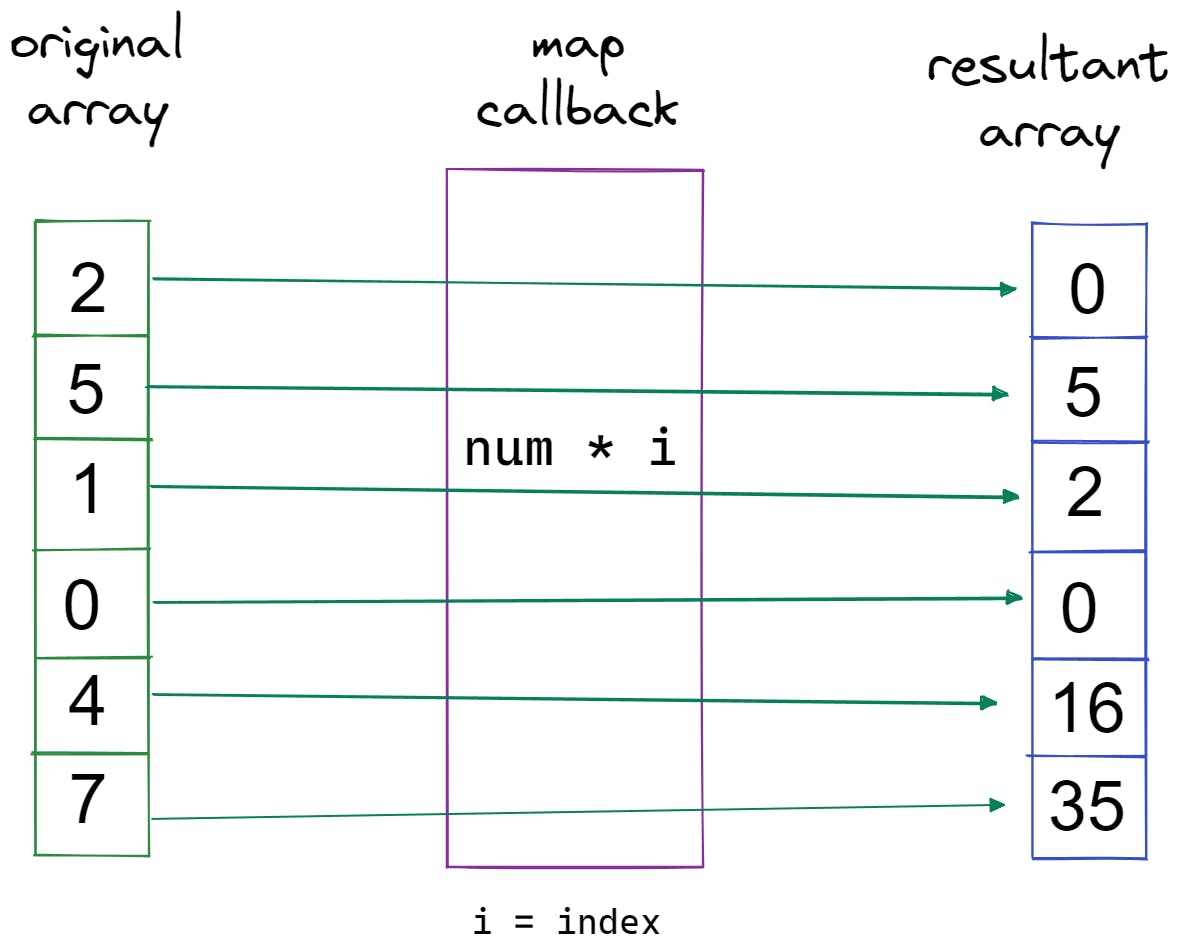The Map Method - Understanding Filter, Map, and Reduce (2/3)
Part 2 of a three-part series that breaks down filter, map, and reduce methods in JavaScript. This section deals with the map method.
This is Part 2 of a three-part series. Check out Part 1: The filter method
Recap
We learned about the filter method in the last section. Here's a quick summary of how the filter method works
The method iterates over each array element
A callback function is called for each iteration. This function can take up to three parameters: the array element, the index of the element, and the entire array.
If the function returns a truthy value, the element passes the filter and is pushed to a new array.
This resulting new array that contains only the elements that pass the filter is returned when the method has finished iterating over all the array elements.
The Map Method
Now we move on to the map method. Its working closely resembles that of the filter method, with the difference being the nature of the callback function.
Here's how the map method works
The method iterates over each array element
A callback function is called for each iteration
The value returned by the callback function is pushed to a new array
This new array is returned at the end when the method has finished iterating over all the array elements.
The filter method gave us an array containing the elements that passed the filter condition. The map method gives us an array containing the return values of the callback function. i.e. Each element of the array is mapped to a new value. Hence the name.
Here's the basic structure
const mappedArray = array.map(function(currentElement, indexOfElement, fullArray) {
//function body
})
You can think of the map method like the conveyor belt shown below. It performs the same action on the incoming items, but the result varies depending on the input.
The callback function
Like the filter method, the callback function for the map method has three parameters
The current array element
Index of the current element
The entire array
The value returned by this callback function is pushed to a new array and this array is finally returned by the method when it has finished iterating over all the elements.
Map Examples
- Let's start with a simple example of doubling an array's values.
const array = [1, 2, 3, 4];
const mapped = array.map(function(el){
return el * 2;
})
console.log(mapped) //[2, 4, 6, 8]
We took each element, multiplied it by 2, and then returned the resulting value.
We can replace the callback function with its arrow counterpart to condense the code further
const mapped = array.map(el => el * 2)
- Here's an example that also makes use of the index parameter of the callback function
let array = [2, 5, 1, 0, 4 ,7];
array = array.map((num, i) => num * i);
console.log(array) // [0, 5, 2, 0, 16, 35]

- Map is a handy tool when you want to perform the same action on different data. I was recently building a tool where I had to represent time (hours, minutes, and seconds) in two digits. So an input of
12:5:7had to be corrected to12:05:07i.e. if the value was less than 10, add a zero before it.
[hours, minutes, seconds] = [hours, minutes, seconds].map(
time => String(time).padStart(2, '0') //Add 0 at the start if time is less than 10
);
The code snippet maps over the [hours, minutes, seconds] array, adds a zero at the start if required, and then returns the resulting array which I reassign to the original hours, minutes, and seconds variables via array destructuring.
- Map is also quite useful when you want to extract data from complex or nested objects. Imagine you have an array of objects, with each object containing employee information. You can use
mapto easily extract information from these objects
const empDetails = [{
firstName: 'Abin',
lastName: 'John',
email: 'ajohn@example.com'
},
{
firstName: 'John',
lastName: 'Doe',
email: 'jdoe@example.com'
},
{
firstName: 'Rocky',
lastName: 'Bhai',
email: 'salam@rockymail.com'
},
{
firstName: 'Tony',
lastName: 'Stark',
email: 'ironman@starkindustries.com'
}
]
const fullNames = empDetails.map(employee => {
return employee.firstName + ' ' + employee.lastName;
})
console.log(fullNames)
// ["Abin John", "John Doe", "Rocky Bhai", "Tony Stark"]
Conclusion
That sums up the map method. By now you would have a good idea of how the callback functions work for the filter and map methods. Up next is the reduce method - the final boss of our mini-series. It is a versatile and powerful tool, whose callback function can be modified to get the result that we want. More on that in the final part of the series.

